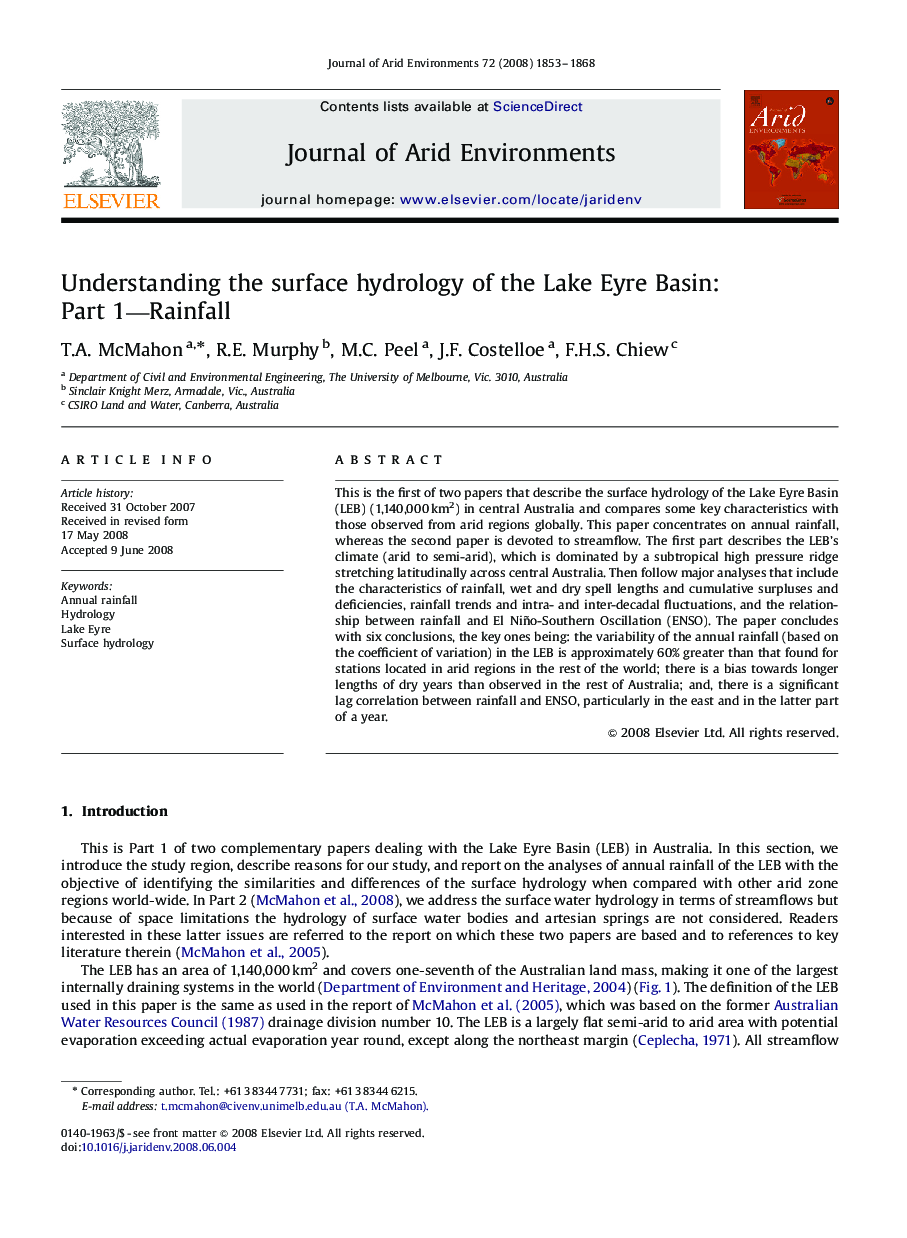| Article ID | Journal | Published Year | Pages | File Type |
|---|---|---|---|---|
| 4394381 | Journal of Arid Environments | 2008 | 16 Pages |
This is the first of two papers that describe the surface hydrology of the Lake Eyre Basin (LEB) (1,140,000 km2) in central Australia and compares some key characteristics with those observed from arid regions globally. This paper concentrates on annual rainfall, whereas the second paper is devoted to streamflow. The first part describes the LEB's climate (arid to semi-arid), which is dominated by a subtropical high pressure ridge stretching latitudinally across central Australia. Then follow major analyses that include the characteristics of rainfall, wet and dry spell lengths and cumulative surpluses and deficiencies, rainfall trends and intra- and inter-decadal fluctuations, and the relationship between rainfall and El Niño-Southern Oscillation (ENSO). The paper concludes with six conclusions, the key ones being: the variability of the annual rainfall (based on the coefficient of variation) in the LEB is approximately 60% greater than that found for stations located in arid regions in the rest of the world; there is a bias towards longer lengths of dry years than observed in the rest of Australia; and, there is a significant lag correlation between rainfall and ENSO, particularly in the east and in the latter part of a year.
